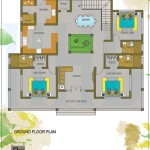When constructing a beach house, the foundation is of utmost importance. Pilings, a type of deep foundation, are commonly employed in beach house construction due to their ability to withstand the unique challenges posed by coastal environments. These challenges include shifting sands, erosion, and the dynamic forces of waves and tides. 1.
Understanding Pilings:
Pilings are long, slender columns typically made of wood, concrete, or steel. They are driven into the ground or bedrock below the beach sand, providing a stable and secure base for the beach house. Pilings transfer the weight of the structure to deeper, more stable soil layers, ensuring the integrity of the foundation. 2.Types of Pilings:
a.Timber Pilings:
Traditionally used in beach house construction, timber pilings are made of wood, typically treated with preservatives to enhance their resistance to rot and decay. b.Concrete Pilings:
These pilings are made of reinforced concrete, offering strength, durability, and resistance to corrosion. Concrete pilings are often used in areas with high erosion rates or where the water table is high. c.Steel Pilings:
Made of steel pipes or H-piles, steel pilings provide exceptional strength and are commonly used in areas with challenging soil conditions or high seismic activity. 3.Benefits of Using Pilings:
-Stability and Strength:
Pilings provide a solid and stable foundation for beach houses, ensuring they can withstand the dynamic forces of waves, tides, and shifting sands. -Erosion Resistance:
By anchoring the structure deep below the sand, pilings protect the beach house from erosion, preventing undermining of the foundation. -Flood Protection:
Elevated beach houses built on pilings are less susceptible to flooding, as the living spaces are positioned above the water level. -Adaptability:
Pilings can be adjusted to accommodate changes in the shoreline or shifting sandbars, making them suitable for dynamic coastal environments. 4.Considerations for Beach House Plans with Pilings:
-Site Assessment:
A thorough site assessment is crucial to determine the appropriate type and length of pilings required. Factors such as soil conditions, water depth, and potential erosion rates must be evaluated. -Engineering Expertise:
The design and installation of pilings should be carried out by experienced engineers and contractors specializing in coastal construction. -Permitting and Regulations:
Building codes and regulations may vary depending on the location. Obtaining the necessary permits and approvals is essential before commencing construction. Beach houses constructed on pilings offer unique advantages, such as enhanced stability, erosion resistance, and protection from flooding. By carefully planning and implementing piling foundations, homeowners can ensure their beach houses can withstand the challenges of coastal environments and provide a safe and enjoyable living space.
Plan 44026td Classic Florida Er Beach House Plans Coastal

Elevated Piling And Stilt House Plans Coastal Home Beach On Stilts Cottage Decor

Beach House Plans Coastal Home Great Design

House Plan 2220 Sq Ft 5 Bedrooms 3 Baths Two Story Piling Collection Pgt 2101 By Topsider Home Coastal Plans Beach

Seaspray Iv Coastal House Plans From Home

Modern Piling Loft Style Beach Home Plan 44073td Architectural Designs House Plans

Casual Informal And Relaxed Define Coastal House Plans

A Place In The Sun Coastal House Plans From Home

Plan 052h 0092 The House

Coastal House Plan Ch672








